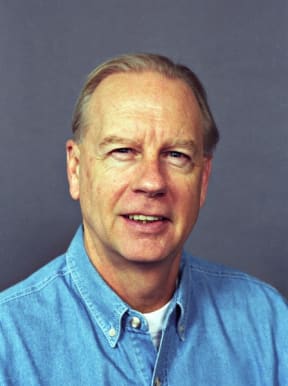A quarter of the news content on America's TV networks consists of amateur video clips that are typically shocking, dramatic or humorous, according to new research.
When news editors realised that crime and violence-based reports rated well, entertainment overtook public interest as the primary driver of much television news, says Professor David Altheide.

Professor David Altheide Photo: Supplied
A professor emeritus at Arizona State University, David Altheide first noted the phenomenon back in the 1970s on local news stations in the United States.
Back then, the network news shows were largely immune to the trend, he tells Mediawatch's Jeremy Rose.
But the advent of mobile phones and portable cameras had seen the promotion of so-called citizen journalism.
At its best, that approach saw footage of true public interest, like footage of Rodney King being beaten by police in Los Angeles in 1991.
But now, Prof Altheide said video clips of accidents, violent crime or humorous events that had been caught on camera – anywhere in the world – were a staple part of the network news diet.
And he said part of the reason was that it was cheap.
“You’re not paying for the reporters going and covering this. People sort of clamber to get their material accepted.”
The baseline of fear
Professor Altheide said a "baseline of fear" had been set which saw news editors ramping up the coverage of terrorism and violent crime.
“Fear starts off with the notion that it is entertaining. Local news [outlets] discovered a number of years ago that crime and violence-related reports – especially if they had video - were entertaining. These things promoted audiences.”
He cites the case of the so-called “missing children problem” in the 1980s that saw media outlets around the country reporting that one-and-a-half million children were being abducted, murdered and tortured by strangers each year.
The hysteria generated by the reports led to laws being passed increasing prison sentences for offenders.
When the FBI investigated it turned out it was rare for there to be more than 150 to 200 kidnappings by strangers in any one year.
Prof Altheide said parental abductions and runaway children were far bigger problems but failed to generate fear so attracted a fraction of the coverage of that given to missing children.
He said dramatic drops in crime across American cities had not been matched by a decrease in the amount of crime coverage – possibly even the reverse.
The realisation that fear was popular had seen the media focus on “the outsiders – the criminals, the deviants, the drug users, the immigrants, the terrorists – who for most Americans were regarded simply as Middle Eastern people”.
Fear and laughter in the age of Trump
Prof Altheide said the news media desire to entertain played a pivotal role in the election of Donald Trump.
He said the media lapped up the “conflictual, insulting, really quite bigoted, racist comments that candidate Trump would make.”
“It was ‘good television.' The head of CBS at the time said, basically, ‘Well, this may not be good for the country but it’s certainly good for our organisation.' ”
But Prof Altheide said the media had begun to not only report President Trump’s more outlandish statements but fact-check them as well.
Prof Altheide said the media’s appetite for material that generated fear had begun to drive not only news judgements but the nature of violent crime itself.
“You get perpetrators – either as criminals or even as terrorists - that are filming themselves, that are trying to go live as they commit these horrific acts.
“Many of the horrendous school shootings in the United States - the perpetrators are issuing statements beforehand and even going online and filming themselves. That coverage becomes an important part of the deed.”

